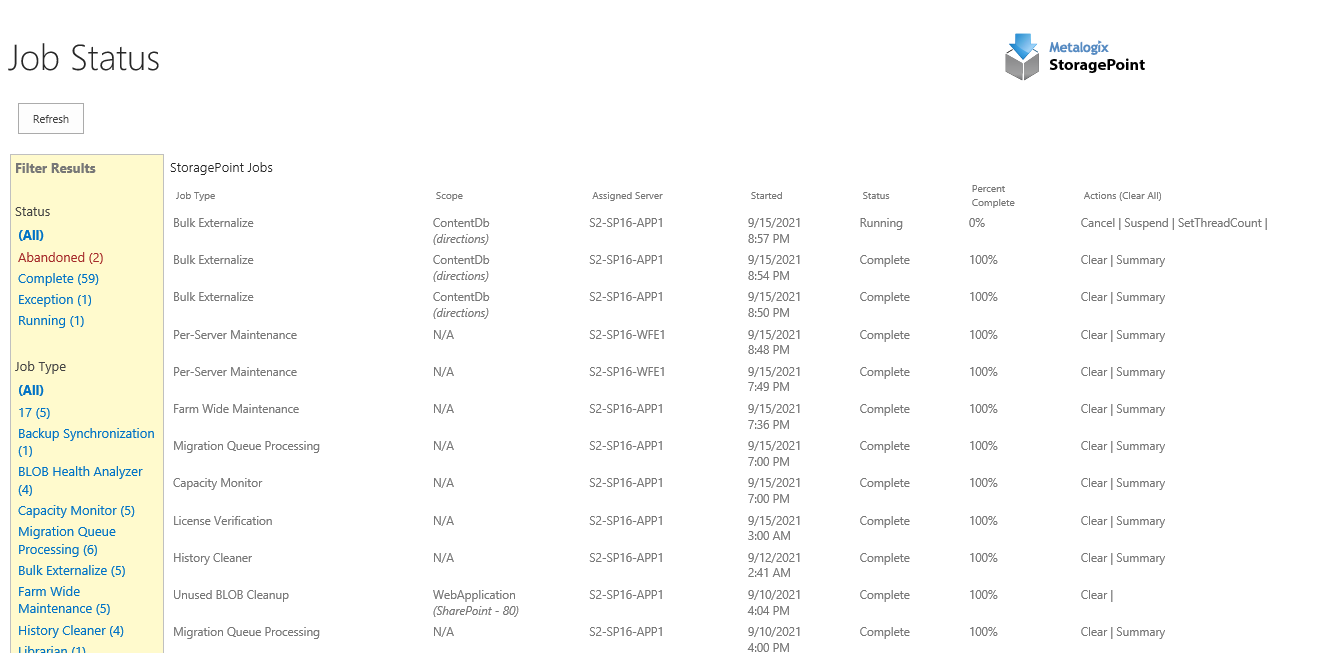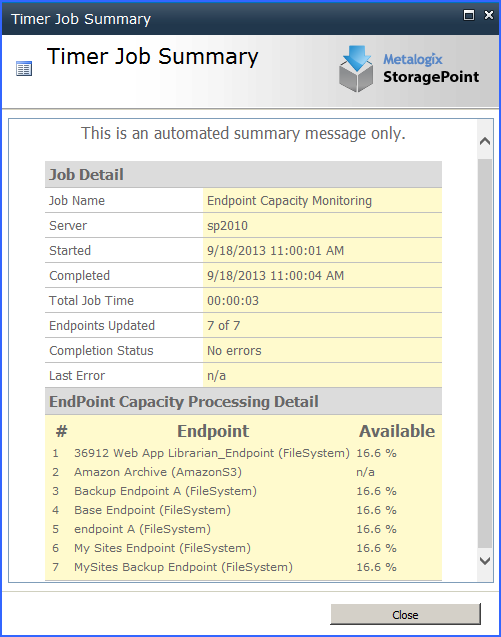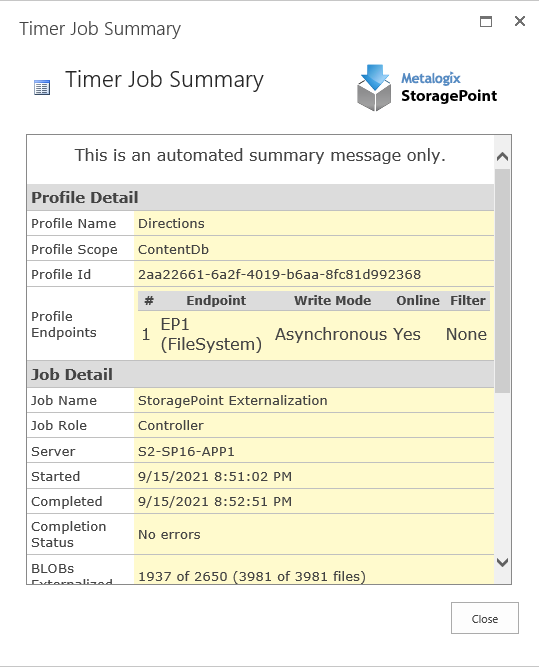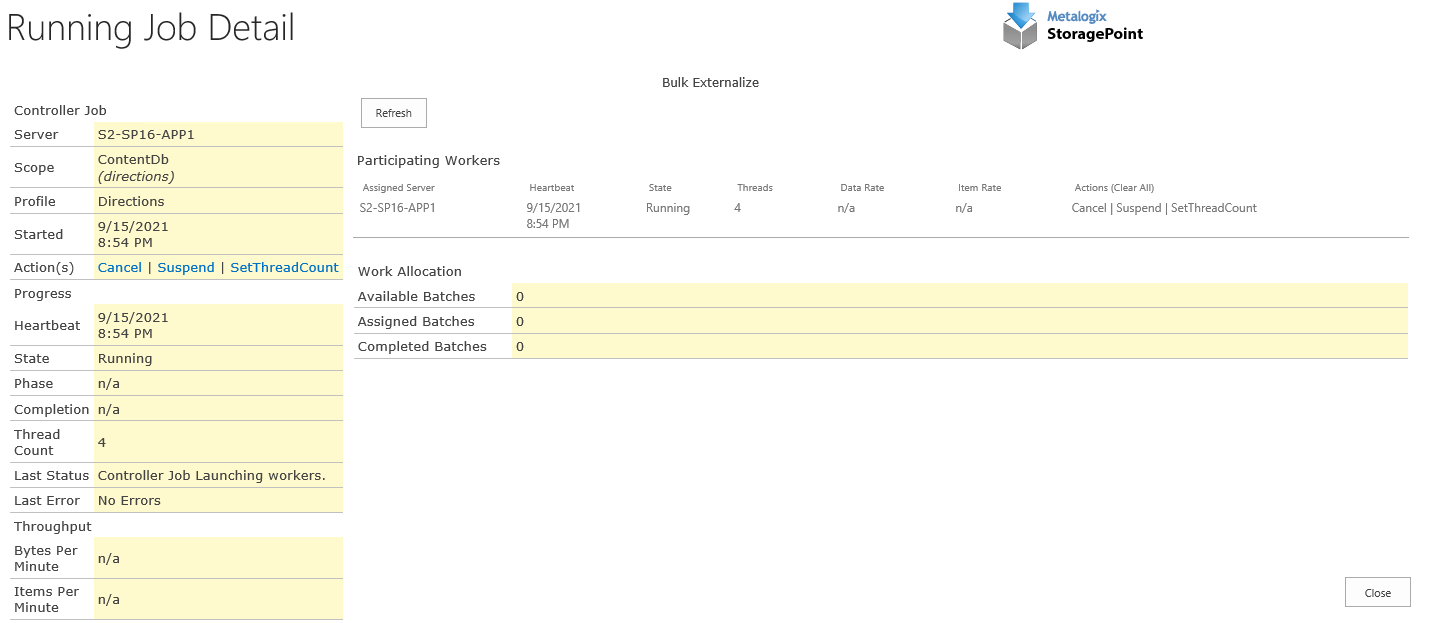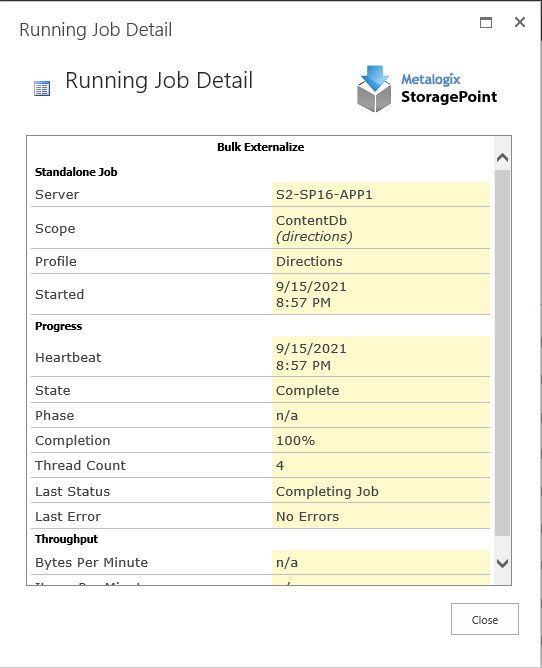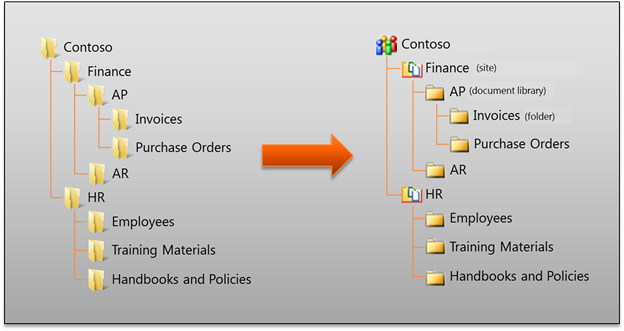Metalogix StoragePoint Timer Job Monitoring
Metalogix StoragePoint Timer Jobs can be monitored like any timer job shipped with SharePoint, along with some additional Metalogix StoragePoint-specific capabilities that will be outlined in this section.
For a list of running and scheduled timer jobs, see Timer Jobs Report.
Job Status
The Job Status page provides an overview of the status of Metalogix StoragePoint Timer Jobs.
The desired behavior is for a recurring job (of any type) to only show the most recently running or completed instance in the Storage Job Status page. This means in the case of the Capacity job running every five minutes that only the job from the last 5 minutes will ever be shown. This applies to all timer jobs, including profile timer jobs such as BLOB Health Analyzer. Manually run jobs will not be subject to this rule, and will show every instance that the timer job was run manually.
1.Launch SharePoint Central Administration from the Administrative Tasks menu or enter the URL directly into a browser window.
2.Navigate to Application Management > Job Status.
3.As a timer job is executing an entry will be present on this page with an approximate percentage complete indicator in the Progress column.
4.Use the Filter Results column to help narrow down the search for a specific job summary.
5.In the Actions column, click Clear to remove that report from the page. (Or click Clear All in the Actions column to clear all notifications.) The job will no longer be available for review on the Job Status page. Once the job is complete, click Summary to review additional information about the timer job.
Example of a Standalone Timer Job Summary:
Example of a Controller Timer Job Summary:
The content of the job will vary depending on the type of job that was run. For example, the Summary for Librarian has an additional link to view the Transaction Log to see what SharePoint content was created.
The Job Name is also a link that provides Running Job Detail that is especially helpful while the job is running in a Controller/Worker configuration. While the job is running, the thread count on each server can be changed, the batches waiting to be processed can be viewed, and the progress overall can be viewed from the Controller Job information on the left side of the page.
If the job is in Standalone, the information will look like this, in a new window:
File Share Librarian
The File Share Librarian is a capability within Metalogix StoragePoint that facilitates a shallow copy migration of content from file shares to containers in SharePoint, meaning content currently stored in file system-based shares can be represented in SharePoint as items, without being physically moved or uploaded into SharePoint. The Librarian simply creates items that point to the already externalized or remoted BLOBs. Once cataloged, they are treated by Metalogix StoragePoint like any other remoted BLOB would be treated.
In addition to cataloging the items on the source file share, the Librarian can also create a dynamic container structure within SharePoint. If a Web Application is used as the destination container in SharePoint, the Librarian will start by creating site collections for the first sub level folders in the file share, then sites at the next level, then libraries, and finally folders. For example, if a file share starting with a folder named Contoso is cataloged into a site collection in SharePoint it would look something like this:
As containers are created in SharePoint, the Librarian can apply permissions to them based on the effective permissions of the file share folders. It will map users and groups on the folders to the Owner (full control), Member (read/write), and Visitor (read only) roles in SharePoint.
File Share Librarian and File Shares
When using the File Share Librarian feature of Metalogix StoragePoint, it is important to understand that once a file share is cataloged by File Share Librarian, the file share is effectively under the control of SharePoint/Metalogix StoragePoint. Files on the file share may be modified or deleted depending on actions taken in SharePoint such as deleting files or removing folders, document libraries and cataloged sites.
For example, if the file is deleted in SharePoint and then purged from the SharePoint recycle bins, it will eventually be removed from the file share.
It is strongly recommended that a full backup of any cataloged file shares is taken before cataloging them with the File Share Librarian feature.
Also for this reason, any SharePoint Structure (Sites, Lists, libraries, folders) that are created as the result of cataloging should not be renamed in the SharePoint farm if it is expected that the librarian timer job may be run again at some point.

